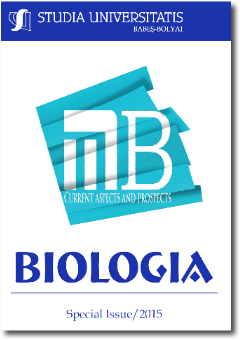Biotechnological improvement of drought and salt tolerance of crops: a new paradigm for increasing food production
Abstract
World population, at present about 7.4 x 109 inhabitants, is expected to grow by almost 30% over the next 35 years, to reach 9.2 x 109 people in 2050. According to FAO estimates, it will be necessary to increase agricultural production by at least 60% over 2005-2007 levels to meet the expected demand for food. This is probably one of the biggest challenges that mankind has ever faced; yet, if we look at the recent past, this goal – a priori – does not seem so difficult to achieve. Indeed, in 50 years, between 1960 and 2009, world population more than doubled – from 3 x 109 to 6.8 x 109 people – while it was still possible to increase the amount of food per capita, from 2200 Kcal/person/day to an average of more than 2800 Kcal/person/day. Obviously, this food is not distributed evenly: while the average food supply in Europe reached in 2009 almost 3400 Kcal/person/day, it was below 2000 Kcal/person/day in some developing countries in sub-Saharan Africa and South East Asia. A fairer distribution of food worldwide is largely a matter of political will and international solidarity – although it will imply significant economic and logistical questions that should also be addressed – and many people believe that there should be no technical problems to feed the world's population if we were able to share the available food resources. Unfortunately this reasoning is flawed: the methods used in the past during the so-called ‘Green Revolution’ (GR) of the 1960s and 1970s allowed a huge increase in the amount of food available to mankind, but cannot be applied anymore under the present, quite different circumstances. As a consequence of the GR, current agricultural production is mostly based on an excessive use of intensive production practices – that will not be sustainable in the long term – and is very dependent on large amounts of inputs, including the massive use of agrochemicals (pesticides, herbicides, chemical fertilizers), and of water for irrigation. In a world where the area of arable land is actually decreasing and irrigation water is becoming an increasingly scarce resource, the most obvious strategies to rapidly increase agricultural production (a significant increase of the global cropland area, or the relative area of land cultivated under irrigation) should be ruled out; the use of our actual high-input agriculture in marginal, low-fertility soils will be also unsustainable. In addition, the loss of genetic diversity of our crops and the forseeable effects of climate change contribute to make necessary a change of paradigm in plant breeding and agricultural practices. Innovative approaches will be required to boost crop yields and food production in the years ahead.
Downloads
Published
How to Cite
Issue
Section
License
Copyright (c) 2015 Studia Universitatis Babeș-Bolyai Biologia

This work is licensed under a Creative Commons Attribution-NonCommercial-NoDerivatives 4.0 International License.





